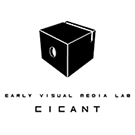Lippmann (1845-1921) & Frederick Ives (1856-1937): the Physicist versus the American Amateur in the pursuit of 3-Dimensionality [EN]
Susan Gamble Gabriel
I explore the changing social background to photographic invention at the end of the nineteenth-century, and the embracing of photographic practice into the Academy. I will explain Lippmann’s ambitious, but unrealised, all immersive full colour 3-Dimesional invention that utilised his eponymous interference colour recording to create an immersive lenticular dome.
In contrast the American inventor Ives, who described himself as an ‘amateur’ achieved social success (in his own assessment) in Europe with demonstrations of his ‘Kromskop’ stereo viewer. Even relocating to London with his son Herbert to promote the device, and selling his own images with the instrument. The viewer combined Ives’ photographic colour-process invention with stereo. He later went on to invent the viewer-free lenticular ‘Parallax Panoramagram’. Ives stated in an interview, in The Photographic News, 1893, that he was “not a member of a close corporation of French Savants” in response to Lippmann whose own invention rivalled his for publicity.
Yet neither competing inventions were to command commercial success to the benefit of Ives or Lippmann, or endure into the twentieth-century with any obvious recognition to their original proposal. I explore how both inventions were absorbed into the fast developing twentieth-century movie-film and photographic industry. At the end of his career Ives lamented that all he had were medals from various photographic societies whereas Lippmann won the 1908 Nobel Prize for his interference colour photography. Lippmann’s inventions were to be explored further by Ives’ son Herbert, who gained one of the first PhD’s available in photographic practice as ‘photometry’ advanced into a profession and science.
Susan Gamble is a visual artist who works in photo-technology, including holography. With her partner Michael Wenyon they are UNESCO Laureates for their work in technology. Gamble has a BA Fine Art, Goldsmiths’ College, London and a PhD in the History of Science, Cambridge University. She was a Fellow at the Center for Advanced Visual Studies, MIT. Wenyon & Gamble have work in the photography collection of the V&A Museum, London, UK, the National Portrait Gallery, Washington, The MIT Museum, and they have exhibited at the Whitney Museum, NYC; The Tokyo Museum of Photography; The Calouste Gulbenkian Museum, Lisbon, and many other venues. Gamble has previously written about Lippmann in: An Appealing Case of Spectra: Photographs on Display at the Royal Society, 1891, Nuncius, 2002.
Organization


Partners





Campo Grande, 376, 1749 - 024 Lisboa | Tel.: 217 515 500 | Fax: 21 757 7006
Copyright © 2021 COFAC. Todos os direitos reservados. Gestão de conteúdos por Producao Multimédia
